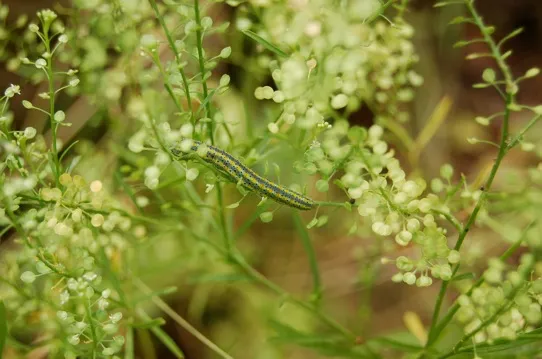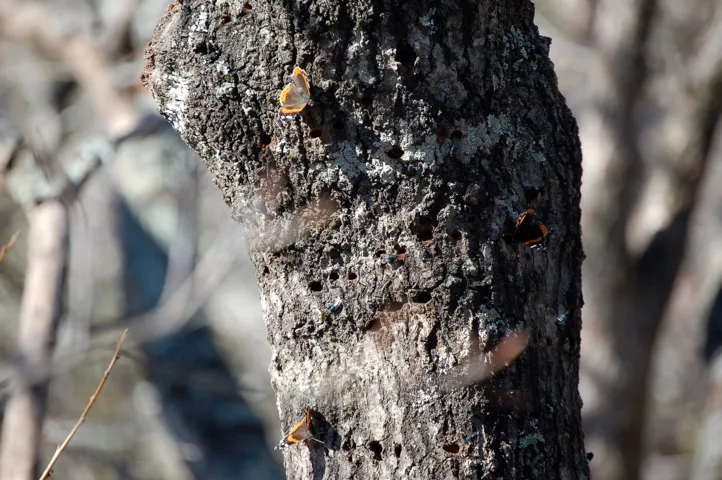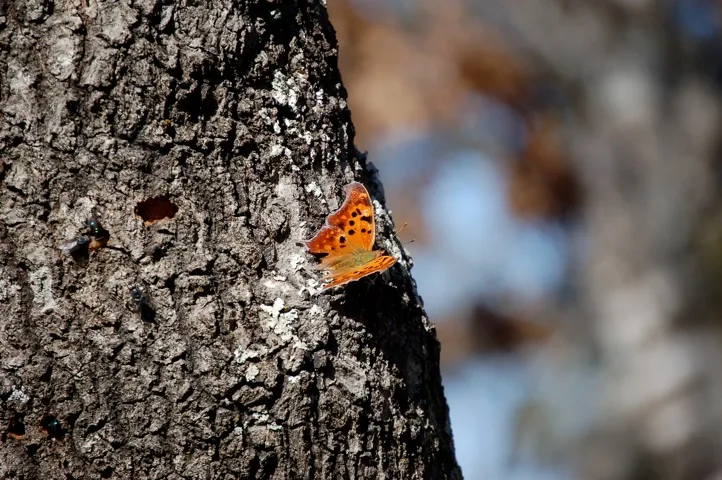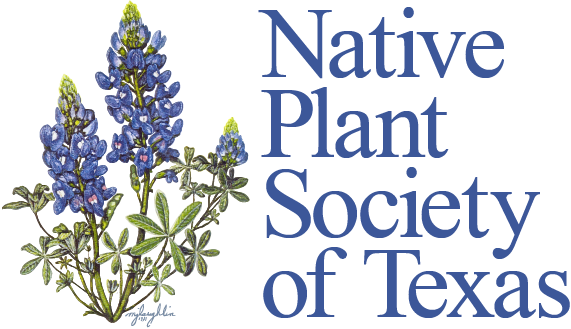By Delmar Cain

At the last meeting of the NPSOT in Boerne, Wendy Leonard, a Park Naturalist for the City of San Antonio Natural Areas, gave an interesting presentation about her research on the Bracted twist-flower (Streptanthus bracteatus), a beautiful flower found in colonies in only a few places in the Hill Country. Working on her Master’s thesis trying to determine why the plant had such a restricted range, Wendy had not only grown her own plants but had also counted and recorded data for some of the native colonies.
During her research she found herself with a dilemma that has become very familiar to me in recent years. One day while recording her data, she found a checkered white caterpillar, doing what it was hatched to do—eat and grow larger. It was ravaging one of the precious Bracted twist-flower plants. Wendy considered her options. Should she remove or leave the caterpillar? If she did not remove the caterpillar, it might destroy the plant. But in removing the caterpillar and trying to save the plant, she was altering the natural conditions under which the plant was growing and thereby affecting her research data. Overcoming her emotional impulse to protect this individual rare plant from a natural risk, she left the caterpillar. Her choice of letting nature make the call probably gave her research data more validity.

While most of us are not working on a scientific thesis, we still have choices to make about whether and how much we try to control our allotted space. The other day I noticed the telltale sign of a bird that I had know from my childhood—the yellow-bellied sapsucker. It was one of the birds that my dad had put on the “ok to shoot” list for my daisy BB gun, because he said that sapsuckers kill trees.
The yellow-bellied sapsucker is a migrant to Texas. Its breeding grounds are in the northern woods of Canada and in some of the states along the Canadian border. It looks and acts like a woodpecker, except that it supplements its diet of fruit and insects with sap. When it arrives in the fall in its southern migration area, which includes Texas, it continues its normal feeding habits. It leaves in March to migrate back to its breeding grounds.

In order to get the supplementary sap for its diet, the yellow-bellied sapsucker pecks holes in the bark of its chosen tree, which might be red oak, hickory or even basswood. It pecks the holes in a horizontal line and returns daily to enlarge, tend, and even make additional holes. In someway that is not scientifically understood the bird manages to keep the sap flowing in the holes, returning to feed daily on trapped insects and on the sap with its appropriately constructed tongue.
The “chosen” tree at my house just happened to be a mature Spanish oak that helps shade a nice terrace where I spend many hours sitting, watching and listening to the creek that runs behind our house. I didn’t notice the sapsucker first. I noticed several butterflies, red admirals and a question mark, and green flies, attracted by the sap, that were landing on the trunk about eight feet from the ground. Then I saw the holes in the bark and later that day the tending sapsucker.

Now I had a dilemma. Do I try to protect the tree or do I let nature make the call? I have already lost several Spanish oaks during the drought to hypoxylon canker, a fungus, which overcomes the defenses of stressed trees. I don’t want to lose more. I could try filling in the holes in the bark with a tree dressing or even wrap burlap around the trunk as some have suggested. I really do enjoy having this beautiful oak, shading me in the spring and summer and giving me wonderful color in the fall.
But as usual the answer is not simple. Some have suggested, although it may happen, that usually the sapsucker does not choose a healthy tree. It generally chooses a tree with high sugar content in the sap, but unhealthy trees may have more amino acids or protein in the sap. Is this oak tree already in decline? It does have some limbs, where the leaves have not fallen—usually a bad sign. If I protect the chosen tree, would the sapsucker just move higher or lower or move to another nearby oak?
In the end I conclude that when in doubt let nature take its course. The control that we think that we have, after all may only be an illusion of our limited point of view. Besides the yellow-bellied sapsucker will go back north in March. I will be left still with the only certain knowledge that I possess. She who controls the supply of rocky road brownies controls my daily wellbeing. That “she” is Paula Heyward at the Bear Moon Bakery.
